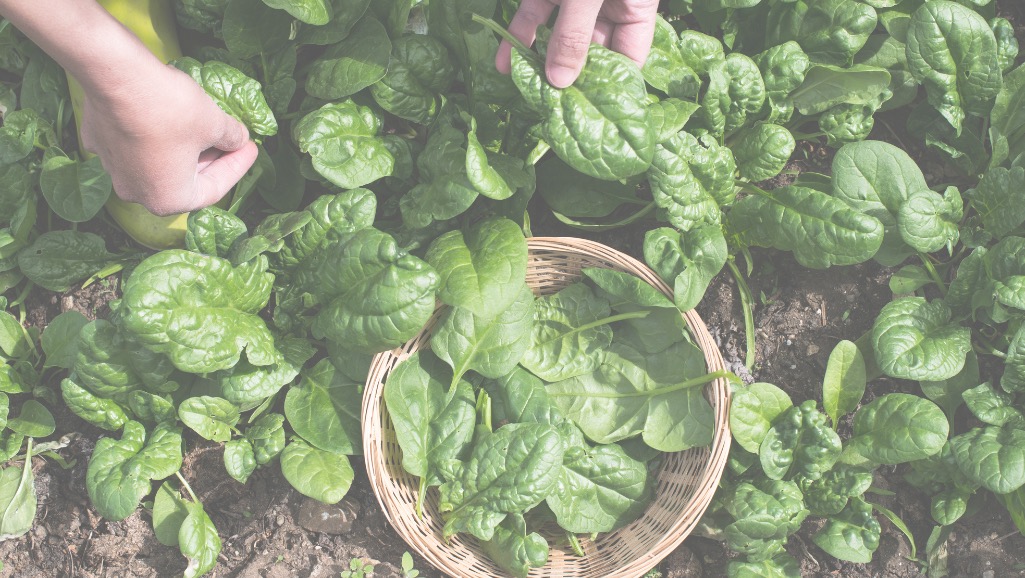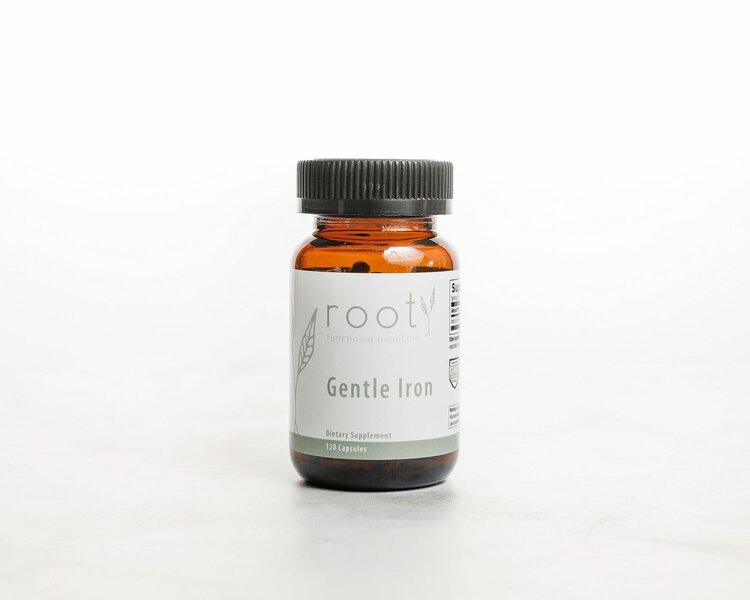
How to Increase Ferritin Levels
Ferritin plays a crucial role in iron storage and management. Maintaining healthy ferritin levels is essential because it can affect your overall well-being and prevent iron-deficiency anemia. In this article, we’ll discuss the difference between iron and ferritin, symptoms of low iron, how to interpret related blood tests, and how to increase ferritin levels.
What is Iron?
Iron is an essential mineral and key component of hemoglobin, the protein in red blood cells responsible for carrying oxygen from the lungs to the rest of the body. Iron levels in a blood test indicate the amount of iron circulating in your bloodstream. This iron is used for your body’s immediate needs. Typically, a normal serum iron level is between 65 - 165 mcg/dL. Low levels of iron on a blood test indicate iron deficiency.
Symptoms of low iron may include:
- Fatigue
- Weakness
- Pale skin
- Brain fog
- Fast heart rate
- Shortness of breath
- Inflammation or soreness of the tongue
- Brittle nails
- Unusual cravings for non-nutritive items, like ice or dirt
- Restless leg syndrome
- Cold hands and feet
Foods with the highest amount of iron include oysters, beef liver, beef, lentils, spinach, tofu, and white beans.
Daily Iron Requirements
The recommended daily iron intake varies depending on age, sex, and life stage. Here are some general guidelines:
- Adult men: 8 milligrams (mg) per day
- Adult women (age 19-50): 18 mg per day
- Pregnant women: 27 mg per day
- Breastfeeding women: 9 mg per day
- Women age 51+: 8 mg per day
Of note, the Recommended Dietary Allowance for iron in breastfeeding women is only 9 mg/day because of the expectation that there will be no menstrual losses during the first six months postpartum. However, if you became iron deficient during pregnancy or experienced substantial blood loss during childbirth, your iron needs during breastfeeding may be higher.
What is Ferritin?
Ferritin is a protein that stores iron within your body. Ferritin levels provide insight into your iron reserves, as it represents the iron stored in your tissues and organs.
Low levels of ferritin may reflect low iron intake and be used as an early indicator of iron deficiency. At Root, we typically define a low ferritin level to be less than 30 ng/mL. Since ferritin reflects iron storage in your body, symptoms of low ferritin are similar to that of low iron levels. However, if caught early enough before causing an iron deficiency or anemia, some people do not have any symptoms at all.
Other Helpful Blood Tests
Beyond iron and ferritin, it’s important to evaluate additional laboratory markers to provide a full picture of your iron status and overall health.
Hemoglobin
Hemoglobin is a protein found in red blood cells (RBC) that is responsible for binding with oxygen in the lungs and carrying it throughout the body to deliver to tissues and organs.
Normal hemoglobin levels can vary slightly depending on age and gender, but in general:
- Adult men: 13.8 to 17.2 g/dL
- Adult women: 12.1 to 15.1 g/dL
Low hemoglobin levels can indicate anemia, a condition characterized by a reduced ability of the blood to carry oxygen.
Hematocrit
Hematocrit measures the proportion of your blood volume that is composed of RBCs. Like hemoglobin, hematocrit levels can provide insight into your body's ability to transport oxygen.
Typically, the reference range for hematocrit is:
- Adult men: 38.3% to 48.6%
- Adult women: 35.5% to 44.9%
Low hematocrit levels can also indicate anemia, especially when combined with a low hemoglobin level.
Mean Corpuscular Volume (MCV)
MCV measures the average size of red blood cells. A typical MCV range is 80 to 100 fL.
Low MCV values can indicate iron-deficiency anemia, while high MCV results may suggest a different type of anemia related to a folate or vitamin B12 deficiency.

A New Way to Access Functional Medicine
Order your own labs and get the support you need. With Root Access, taking charge of your health through a root-cause, data-driven approach has never been easier.
Become an Access Member
What Causes Low Ferritin?
Understanding the root causes of low ferritin levels can help you address the underlying issues.
Common causes include:
- Inadequate dietary iron intake
- Blood loss due to heavy menstrual periods, bleeding ulcers, or gastrointestinal disorders.
- Pregnancy and breastfeeding (increased iron demands)
- Poor iron absorption due to conditions like celiac disease, Crohn's disease, or gastric bypass surgery
- Chronic medical conditions like kidney disease or cancer
- Vegetarian or vegan diets. These diets may not provide enough heme iron, the type of iron found in animal products, which is more easily absorbed by the body.
Oftentimes, we find that low ferritin levels are often due to a variety of factors over the span of months or even years.
How to Increase Ferritin Levels
While each root cause of low ferritin may require a unique treatment plan, here are a few crucial interventions we often recommend to individuals to increase ferritin levels.
Iron + Vitamin C
While eating more iron-rich foods is crucial to increasing ferritin levels, we also recommend pairing these foods with a source of vitamin C to enhance iron absorption, optimize iron transport within the body, and provide antioxidant support to prevent iron oxidation.
Here are a few ideas on how to optimize iron and vitamin C:
- Hamburger or pot sauce with sautéed red bell peppers
- Grass-fed beef jerky stick and orange slices for a snack
- White bean or lentil soup with freshly squeezed lemon juice on top
- Homemade chili with kidney beans, ground beef, and crushed tomatoes
There are two different types of iron: heme and non-heme. Heme iron is found only in animal proteins and is more readily absorbed and used by the body than non-heme iron. Plants only contain non-heme sources of iron. For example, your body will more effectively use the iron found in red meat than spinach. While plants play an important role in overall health and iron optimization, prioritizing animal-based sources of iron and pairing with a plant-rich source of vitamin C is often the most effective way to increase ferritin levels.
Hidden Liver
While it might not be the most popular item on your plate, liver is an incredible source of iron and other essential vitamins and minerals that can help to increase ferritin levels.
In fact, liver is one of the best sources of iron in the human diet with over 6 mg of iron in a 3-ounce serving.
Plus, liver provides an abundance of other essential vitamins and minerals like vitamin A, vitamin B12, folate, and zinc, all of which play vital roles in optimizing ferritin levels and preventing anemia. In fact, one large review study found that vitamin A supplementation alone significantly increased ferritin levels, raised hemoglobin levels, and reduced the risk of anemia by 26 percent (1).
Since most of us do not enjoy the taste of liver, we usually recommend “hiding” liver in other flavorful dishes where you would also use ground beef. For instance, you can use ground up liver in meatloaf, spaghetti, tacos, or shepherd’s pie. Since liver is extremely nutrient dense, a little goes a long way. Start with mixing just 3 ounces of ground liver into a recipe once or twice a week. It’s important to choose high-quality sources of beef liver from grass-fed/pasture-raised cattle. If you can’t stomach the idea of hidden liver, you could also consider taking a pasture-raised desiccated liver supplement.
Gentle Iron
A key step for increasing ferritin levels is increasing iron intake. Depending on the level of iron or ferritin, most people may also need to take an iron supplement to see results. Unfortunately, the majority of iron supplements are very harsh to the digestive system and cause unwanted symptoms like abdominal pain and constipation. At Root, we offer a Gentle Iron supplement variety which contains easy-to-absorb iron in a gentle formula to avoid digestive upset. Just one capsule per day provides an additional 27 mg of ferrous bisglycinate chelate.
“I’ve been taking Gentle Iron for 2.5 months, and along with some dietary changes, my ferritin has gone up 10 points. These are small capsules, easy to swallow and don’t leave an irony taste in your mouth. Hey also haven’t caused constipation as some iron supplements tend to do.” - Lindsay 7/20/23
Cast Iron Pans
When you cook in a cast iron pan, a small amount of iron is transferred to the food. This is known as iron leaching. The amount of iron that leaches into your food depends on the type of food, the acidity of the food, and the length of cooking time. However, some studies suggest cooking in cast iron pans can double the iron content of meat and vegetables (2). Plus, cast iron pans are known for their heat retention capabilities. This means that once heated, they maintain a steady, even temperature. This quality is invaluable for achieving a perfect sear on steaks or uniform cooking throughout a stir-fry.
Key Takeaways
As an iron storage protein, ferritin is a critical lab value to obtain when evaluating iron status. Inadequate intake of iron, increased demand, poor absorption, or blood loss may cause low ferritin. You can increase ferritin levels by pairing an iron-rich food with a source of vitamin C, using hidden liver, taking a gentle-iron supplement, and cooking with cast-iron pans.
Related Articles

What is Functional Nutrition?
Functional nutrition is a powerful cornerstone to functional medicine. It uses food as a natural medicine to help restore balance, replete nutrient deficiencies, heal the gut, and more.

Is Functional Medicine Covered By Insurance
Chances are, if you are in a true functional medicine practice where your doctor is practicing in a functional medicine model of care and not a conventional insurance model of care, the most likely answer is no, it’s not covered by insurance.
